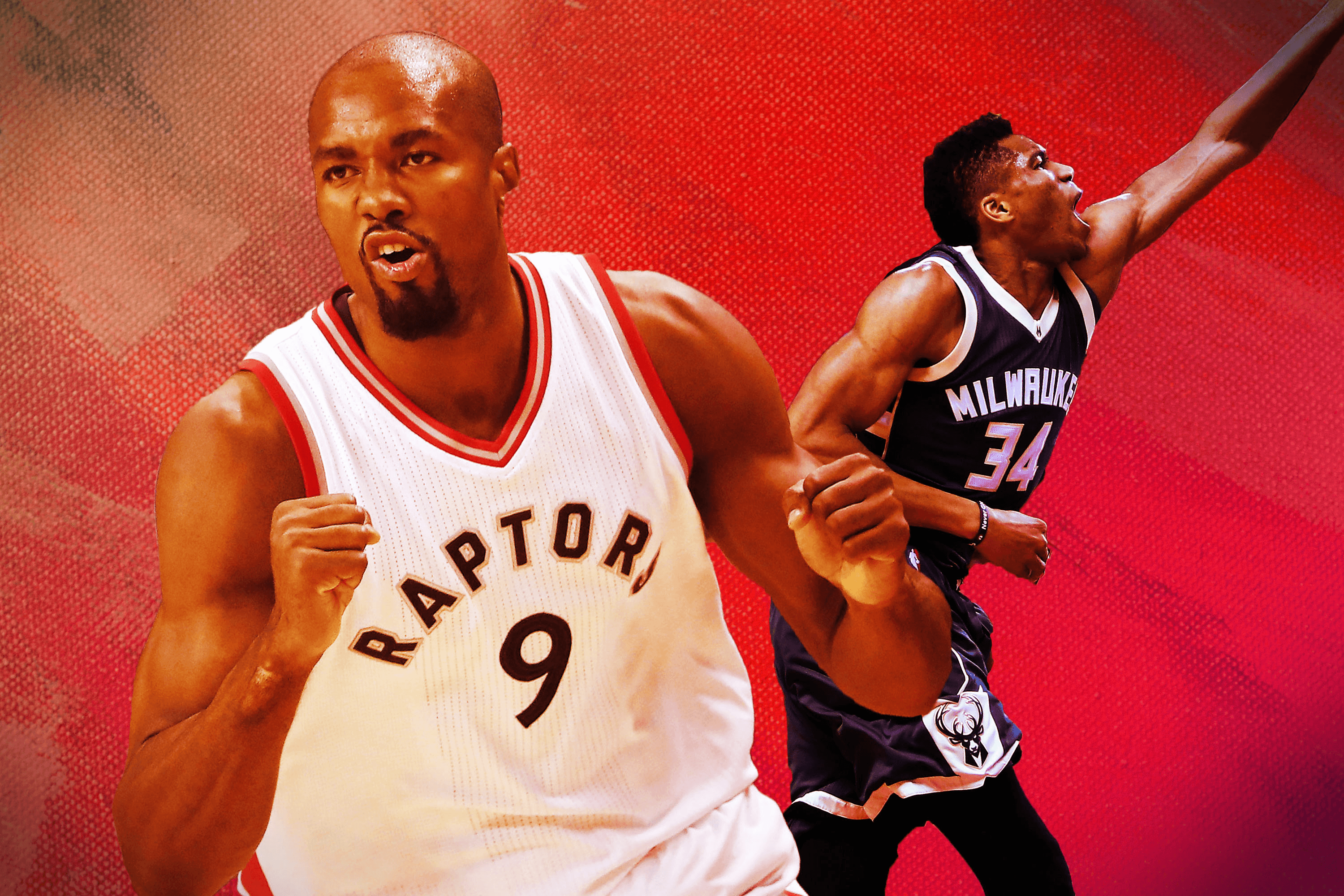
The first 74 seconds of Tuesday night’s excellent Bucks-Raptors Game 2 was anachronistic in every way imaginable. In that span, Raptors center Jonas Valanciunas commandeered the entire flow of production. He was irrationally aggressive to start, even attempting to bully his way from the 3-point line down to the block against his much frailer defender. His name appears, without interruption, on Toronto’s side of the play-by-play seven times in those 74 seconds. The very first basket of the game came on a sweeping half-hook from Valanciunas 17 seconds in. He was fouled and made the free throw — he earned the team three points the old-fashioned way. All of this is notable for how poorly it represented the game. Valanciunas’s hyperassertiveness felt like a desperate cry for relevancy that funneled directly into the void. He wanted to make a statement, but this isn’t the time to make it. Valanciunas sat out for the final 16 minutes of the game. This isn’t his series.
The Raptors, in spite of countless runs sparked by the percolating greatness of Giannis Antetokounmpo, narrowly escaped with a 106–100 victory at home largely because they knew this wasn’t Valanciunas’s series. They won because of a moment of foresight back in February, when the team did what it needed to in landing Serge Ibaka in a midseason deal. Over the last four seasons, Toronto has boasted one of the most traditionally constructed rosters in the league, a ’50s nuclear family on the hardwood. It doesn’t take much to completely reconfigure that DNA — only the rarest of modern-day NBA archetypes, the floor-spacing rim protector. The Raptors made sure they’d be armed with one come the postseason. Game 2 was exactly why.
It was Ibaka’s finest moment as a Raptor: 16 points (with 12 of them coming from 3, where he shot 4-of-7), seven rebounds, six assists, and two of the best blocks you’ll see all season against two of the Bucks’s longest, most athletic players. He was a game-high plus-13 in 35 and a half minutes. His performance in the third quarter was arguably the best I’d seen from him in years.
Here he is with a block on rookie Thon Maker, effectively blotting out his (spiritual) son:
For a first-year player, Maker has impressed in a fairly significant role for these Bucks — he offers 3-point ability from the 5 position, impressive passing instincts, and the defensive effort to pair with his excellent athleticism for his size. He is one of Ibaka’s many stylistic successors that roam this league now. And Ibaka, lately robbed of his top-end explosiveness due to age and injury, has been tasked with patrolling a lane full of players who look to improve upon his prototype.
Ibaka was brought to Toronto to modernize its system, and simply having him as a reliable option on the floor allowed the Raptors to make other necessary adjustments. Fellow new arrival P.J. Tucker had the assignment of containing Antetokounmpo for most of the game, and, considering the five or six inches he gives up on height, did a fine job making Giannis settle for more difficult shots than he’s used to getting against smaller defenders. “Trying to stop Giannis,” Lowry laughed in his NBA TV postgame interview. “That’s like an impossible task.”
For a game, it was mission accomplished: Antetokounmpo finished with 24 points on 24 shots (37.5 percent from the field). The Raptors won the offensive battle of each team’s respective Big Two: Kyle Lowry and DeMar DeRozan combined for 45 points; Antetokounmpo and Khris Middleton combined for 44. With primary and secondary options effectively neutralized, the advantage went to the Raptors, who had the best third option on the floor. This is Ibaka’s comfort zone, after spending so many years as a release valve on the periphery of Kevin Durant and Russell Westbrook.
Ibaka is a godsend for the team, but it’s one thing to catch up with the rest of the league; it’s another to be on the bleeding edge. Here is a backdoor alleyoop from the Bucks’ power forward to its center in downhill motion after a missed shot:
The Raptors are, by habit, construction, and nature, a reactionary team. If it hasn’t been made painfully obvious over the past four seasons, they do not punch first. Having talent has taken them relatively far, but it’s flexibility that has always been their core issue. They’ve made strides this season, but could not have matched up against a bigger first-round threat than the Bucks, who trail only the Warriors in their plasticity. Despite being the underdog, Milwaukee will continue to set the agenda with all the different looks the team can achieve on the court. Game 2 was a relief for the Raptors, if not quite the statement game they were looking for. The win may be all that matters in the postseason, but with the series level heading to Milwaukee, we’re about to see just how far the Raptors are willing to bend.

